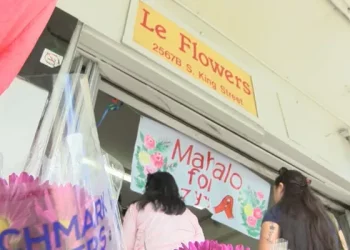Laos and Thailand share a long history of economic, cultural, and geographical ties, with their border being one of the most fluid in Southeast Asia. For both locals and travelers, the movement of people and goods between the two countries is a common occurrence, and this proximity has influenced their currency practices. One question frequently asked by travelers and traders alike is whether Laos accepts Thai Baht (THB) for transactions. This question often arises because Thai Baht is widely used across the region, and many individuals find themselves in Laos with Baht in hand after a trip to Thailand.
In this article, we will explore whether Laos accepts Thai Baht, the practicality of using it for transactions, and how currency exchange works in Laos. Additionally, we will provide insight into the exchange rate mechanisms and the best practices for currency conversion when traveling between Thailand and Laos.
The Role of Thai Baht in Laos’ Currency System
Currency Usage in Laos
Laos has its official currency, the Lao Kip (LAK), which is the legal tender for all domestic transactions. The Kip has been in circulation since 1952 and is issued by the Bank of the Lao P.D.R. (People’s Democratic Republic). While the Kip is the official currency, many international currencies are also commonly accepted, particularly in areas with high tourism traffic.
Due to Laos’ proximity to Thailand and the frequent cross-border exchanges between the two countries, the Thai Baht has become one of the most accepted foreign currencies in Laos. This is especially true in major cities like Vientiane (the capital), Luang Prabang, and areas near the Thai border such as Nong Khai and Savannakhet. Thai Baht is often accepted in larger amounts for goods and services in these locations, particularly in hotels, restaurants, and souvenir shops that cater to tourists.
Is the Thai Baht Officially Accepted in Laos?
Officially, Laos has not adopted the Thai Baht as legal tender, and it cannot be used in the same way as the Lao Kip for routine transactions, especially in smaller businesses or rural areas. Nevertheless, many businesses in tourist-heavy regions are open to accepting Thai Baht. This informal acceptance of foreign currencies is more of a convenience for Thai nationals and other regional travelers than a formally structured policy.
In addition, Thai Baht may be more readily accepted in border towns and areas with high traffic of Thai visitors. In these areas, the exchange of Baht for Kip is a common practice, and shop owners often price goods and services in both Thai Baht and Lao Kip.
The Pros and Cons of Using Thai Baht in Laos
Pros
Convenience for Travelers: Thai Baht is widely accepted in tourist spots, particularly those close to Thailand’s borders. Travelers arriving in Laos from Thailand may find it convenient to use Baht without needing to exchange currency immediately.
Exchange Rates in Border Areas: In areas near the Thai-Laos border, exchange rates between Baht and Kip are often competitive, so there is little concern about high exchange fees. In some cases, merchants may offer slightly better rates than banks or money changers.
Familiarity for Thai Tourists: For Thai tourists visiting Laos, using their local currency can provide ease and reduce the need for immediate currency conversion, enhancing the overall travel experience.
Cons
Limited Acceptance Beyond Tourist Areas: Thai Baht is not universally accepted across Laos. Outside of major cities and tourist hotspots, you may find that businesses will only accept the Lao Kip, leaving you with the need to convert your Baht into Kip.
Potentially Poor Exchange Rates: The exchange rate offered for Thai Baht in Laos can be less favorable compared to the rate at a Thai bank or currency exchange service. If you’re not in a tourist area or an exchange facility, the rate you receive might not be as competitive.
Currency Confusion: Using multiple currencies (Thai Baht, Lao Kip, and occasionally USD) in a single market can lead to confusion, especially when trying to negotiate prices in places where currency exchange is not clearly displayed or when vendors are unwilling to accept Baht.
What Happens If You Use Thai Baht in Laos?
In some cases, when you use Thai Baht in Laos, it will be converted to Lao Kip by the vendor or business accepting your currency. However, this is not always done at the official exchange rate, and you may end up with a slightly worse deal. Some establishments may charge an additional fee for accepting foreign currency, which can make it more expensive than exchanging Baht into Kip at a bank or currency exchange kiosk.
How the Exchange Rate Works in Laos
Currency Exchange Services in Laos
When exchanging currency in Laos, most travelers will opt for banks, currency exchange kiosks, or local ATMs. These services allow for the exchange of foreign currencies such as Thai Baht, US Dollars, and even Euros. The rates at these locations will fluctuate depending on various factors, including market conditions and the location of the exchange service.
It is always a good idea to compare rates at multiple locations before exchanging large amounts of money. While larger cities typically offer more favorable exchange rates, smaller towns may charge higher fees or provide worse rates. If you are in a tourist area, the convenience of exchanging currency might outweigh the unfavorable rates.
ATM Withdrawals and Debit Cards
ATMs in Laos also allow foreign cardholders to withdraw Lao Kip or Thai Baht directly from their accounts. However, fees for withdrawing cash from international ATMs can be high, so travelers should check with their banks to understand the cost structure. Many banks also impose withdrawal limits, which could affect the amount of cash you can access at once.
Some ATMs near the border may allow withdrawals in Thai Baht, but this is not guaranteed across all locations.
Best Practices for Currency Conversion
Convert Currency at a Bank: For the most reliable exchange rates, banks are often the best choice for currency exchange in Laos. They may charge a small fee, but you can expect a fair rate.
Avoid Currency Exchange at Airports or Tourist Spots: Currency exchange services in airports or tourist spots often offer less favorable rates due to higher demand and lower competition.
Bring Both Thai Baht and Lao Kip: If you are traveling between Thailand and Laos, it can be helpful to bring both currencies to ensure that you have the flexibility to use whichever currency is accepted in the area you are visiting.
Check the Daily Exchange Rate: The exchange rate between Thai Baht and Lao Kip fluctuates regularly. Make sure to check the daily rate before exchanging a large amount of currency to avoid unfavorable deals.
How to Handle Small Transactions in Laos
For small transactions in Laos, it is always better to use the local currency, the Lao Kip. While some businesses will accept Thai Baht for larger purchases, street vendors, local markets, and small shops generally do not. The Lao Kip is often the preferred currency for low-value transactions, so it is wise to keep some Kip on hand, especially if you are venturing beyond major tourist areas.
The Impact of Thai Baht in the Tourism Sector
The tourism sector plays a vital role in Laos’ economy, and with many visitors coming from Thailand, the Thai Baht’s role cannot be underestimated. Travelers, especially those crossing the border by land, frequently rely on their Baht for purchases in Laos. Hotels, tour operators, and restaurants in tourist areas are accustomed to accepting Baht, and this practice boosts tourism and makes transactions smoother for visitors.
In addition, many businesses, especially those near the border, accept both currencies as part of the broader push to accommodate the influx of Thai tourists. This further highlights the importance of the Thai Baht in Laos’ tourism sector, despite the fact that the Kip is the official currency.
Conclusion
In conclusion, while Laos officially uses the Lao Kip as its currency, the Thai Baht is widely accepted in several areas, particularly in cities close to Thailand and in popular tourist spots. However, its acceptance is not universal, and there are places where you will need to use the local currency, especially in rural areas.
When traveling to Laos, it’s advisable to carry both Thai Baht and Lao Kip to ensure you can make purchases without difficulty. If you do decide to use Thai Baht, be aware that exchange rates might not always be in your favor, and some businesses may charge a premium for accepting foreign currency. To get the best value, it’s important to compare exchange rates, use ATMs wisely, and exchange currency at reliable locations.
For those planning an extended stay or traveling deep into Laos, it’s better to familiarize yourself with the local currency system and exchange enough Kip in advance, so you can avoid unnecessary inconveniences.
Related Topics:

























